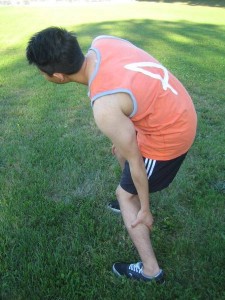Juvenile rheumatoid arthritis is a type of arthritis usually common in children. The condition results to pain, swelling, unexplained rash and stiffness of the joints. Some forms of juvenile rheumatoid arthritis can result to serious complications such as problems with growth and inflammation of the eyes.
[youtube url=”https://www.youtube.com/watch?v=GWhskm2tvOo”]Causes of juvenile rheumatoid arthritis
Juvenile rheumatoid arthritis happens when the immune system of the body attacks it own cells and tissues and it is usually due to heredity and the environment. Mutation of the genes makes a person prone to environmental factors such as viruses.
Symptoms

- Swelling, pain and stiffness of the joints which are severe in the morning.
- Limping or favoring one leg, especially when the joints are affected
- Pain and swelling of the joints and limited range of motion
- Weakness and reduced physical activity
- Recurring fever that can fluctuate throughout the day
- The joints appear twisted
- Inflammation of the eye that results to redness, irritation and pain
- Mild rash
- Muscle aches all over the body
- Swollen lymph nodes
- Children affected by rheumatoid arthritis grows slowly and there is loss of weight
Treatment
- Eat a well-balanced and nutritious diet. The diet should be rich in vitamins, minerals and calcium that strengthens the joints and bones.
- Apply warm and cold compress on the affected joints to lessen the pain, swelling and stiffness. It relieves sore muscles, improves the flexibility of the joints and increases flow of blood in the area. Another alternative is taking warm baths.
- If the pain in the joint and stiffness becomes severe in the mornings, use an electric blanket with a timer that turns on before the person wakes up. The blanket will warm up the joints and improves movement.
- Massage the area to lessen the tension and relieve the muscle discomfort. Massage the affected area using lemon, lavender and eucalyptus oil to relax the joints.
- Perform regular exercises to stay fit and flexible and makes the bones stronger and toning the muscles. Exercise improves the blood flow and restores proper functioning of the body.
- Ginger has an anti-inflammatory property that is good for the condition. It suppresses inflammation of the affected area. Turmeric has anti-inflammatory and antiseptic properties ideal for managing juvenile rheumatoid arthritis.
- Children with juvenile rheumatoid arthritis needs plenty of rest to allow the joints to recover and regain strength. Maintain a proper balance between rest and activity since prolonged period of inactivity can cause stiffiness of the joints and lessen their flexibility.
Tips
- Persuade the child to perform physical activities and know his/her limitations. Follow recommendations given by a physical therapist.
- Juvenile rheumatoid arthritis can result to an increased risk of inflammation of the eye. It is recommended to set regular eye examinations.